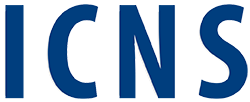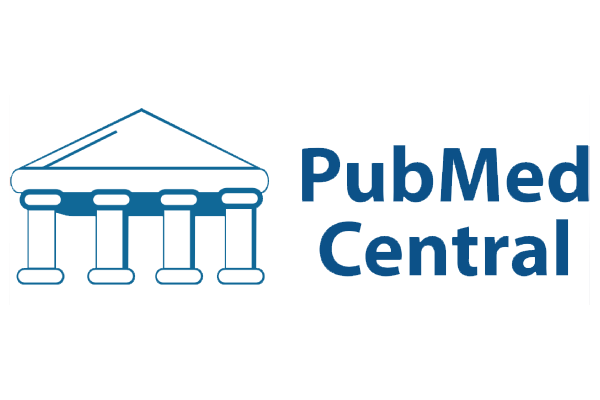by Rabeel Ahmad, DO; Samantha Shor, DO; Genesy Aickareth, BS; Roselyn Chiyezhan, BS; Meghna Mathews, BS; Isabel Chacko, BS; Brett Pontelandolfo, BS; and Joanne Mathews, MD
Dr. Ahmad is with Hackensack Meridian Palisades Medical Center in North Bergen, New Jersey. Dr. Harrison is with the Department of Internal Medicine, Cooper University Hospital in Camden, New Jersey. Ms. Aickareth is with Texas Tech University Health Sciences Center in Lubbock, Texas. Ms. Chiyezhan is with Des Moines University Medicine and Health Sciences in West Des Moines, Iowa. Ms. Mathews is with the Cooper Medical School of Rowan University in Camden, New Jersey. Ms. Chacko is with the Rowan University Graduate School of Biomedical Sciences in Stratford, New Jersey. Mr. Pontelandolfo is with the University of Wisconsin-Madison in Madison, Wisconsin. Dr. Mathews is with Synapse Integrative Behavioral Health in Marlton, New Jersey.
FUNDING: No funding was provided for this article.
DISCLOSURES: The authors declare no conflicts of interest relevant to the content of this article.
Innov Clin Neurosci. 2025;22(4–6):27–28.
Abstract
Treatment-resistant depression (TRD) is major depression that has not responded to at least two trials of antidepressants. The STAR-D study highlighted the necessity of multiple treatment steps to achieve remission, with each step decreasing the likelihood of success and increasing relapse risk, underscoring the complexity of TRD treatment and the need for personalized approaches. Transcranial magnetic stimulation (TMS) is a noninvasive technique using magnetic fields to stimulate brain nerve cells, targeting the dorsolateral prefrontal cortex, that is effective in many patients with depression. However, for patients with TRD who fail TMS, no standard of care exists. Intranasal esketamine, a noncompetitive N-methyl-D-aspartic acid (NMDA) receptor antagonist, is approved for adults with TRD or major depressive disorder with suicidal thoughts. We present a case series of five patients with TRD who failed TMS and subsequently responded to intranasal esketamine. Response, defined as a 50-percent symptom reduction, was monitored using Patient Health Questionnaire (PHQ-9), Beck Depression Inventory (BDI), and Generalized Anxiety Disorder-7 (GAD-7) scores. After 16 treatment sessions, all patients achieved a treatment response per PHQ-9 and BDI scores; 80 percent achieved complete remission per PHQ-9, and 60 percent per BDI. Additionally, 80 percent of patients showed a treatment response on GAD-7 scores. This case series supports further investigation into esketamine for patients with TRD who are unresponsive to TMS.
Keywords: Intranasal esketamine, treatment resistant depression, transcranial magnetic, stimulation
Treatment-resistant depression (TRD) is defined as major depression that has not responded to at least two trials of antidepressants. Previous literature has investigated the acute and longer-term outcomes of outpatients with depression who require one or multiple treatment steps to achieve remission.1 The STAR-D study demonstrated that a significant proportion of patients needed multiple treatment steps to achieve remission, and each subsequent step was associated with a decrease in the likelihood of remission and an increase in the likelihood of relapse.1 This study highlights the complexity of treating TRD and underscores the importance of personalized treatment approaches.
Transcranial magnetic stimulation (TMS) is a noninvasive neuromodulation technique approved for treating patients with depression who have not responded to medications. It involves using magnetic fields to stimulate nerve cells in the brain, particularly targeting the dorsolateral prefrontal cortex (DLPFC), which is associated with mood regulation. The efficacy of TMS is supported by multiple studies and meta-analyses, with response rates approaching 80 percent.2 However, for patients with TRD who have failed TMS therapy, there is currently no standard of care for management.
Intranasal esketamine is the only pharmacologic agent that is a nonselective, noncompetitive antagonist of N-methyl-D-aspartate (NMDA) receptors that has been approved by the United States Food and Drug Administration (FDA) and European Medicines Agency (EMA) for adults with TRD or those with major depressive disorder (MDD) with suicidal thoughts or actions.3
We present the first-reported case series based on the real-world experience of five patients who had previously failed TMS and subsequently responded to intranasal esketamine. Response to treatment, defined as a 50-percent reduction in symptoms, was measured using Patient Health Questionnaire (PHQ-9), Beck Depression Inventory (BDI) and Generalized Anxiety Disorder-7 (GAD-7) scores. All patients in this case series achieved a treatment response according to PHQ-9 and BDI scores after 16 sessions of intranasal esketamine treatment. Complete remission of depression, defined as a PHQ-9 score of less than five or a BDI score of less than 10, was also monitored. Four patients (80%) achieved complete remission of depression according to the PHQ-9 scale, and three patients (60%) achieved complete remission of depression according to the BDI scale. Four patients (80%) achieved a treatment response according to GAD-7 scores. This case series presents an opportunity for further investigation into esketamine as an effective treatment for TRD in patients that have previously failed TMS.
Cases
Case 1. Patient 1 was a 41-year-old female individual with posttraumatic stress disorder (PTSD) and MDD with a duration of depression of 10 years. She attempted a trial of intranasal esketamine after failing a full course of TMS. Psychiatric medications at the time of treatment with esketamine included modafinil, zolpidem, escitalopram, alprazolam, duloxetine, fluoxetine, and lamotrigine. Baseline PHQ-9 score was 23, which improved to a score of 8 and 7 after completing eight and 16 sessions of esketamine, respectively. Patient 1 had a response to treatment (50% reduction of symptoms) according to PHQ-9 scores but did not achieve remission (PHQ-9 score <5). Baseline BDI score was 69, which improved to a score of 24 and 19 after completing eight and 16 sessions of esketamine, respectively. Patient 1 had a response to treatment according to BDI scores but did not achieve remission (defined as a BDI score <10). Baseline GAD-7 score was 20, which improved to a score of 11 and 10 after completing eight and 16 sessions of esketamine, respectively. Patient 1 achieved a treatment response according to GAD-7 scores after 16 sessions.
Case 2. Patient 2 was a 32-year-old male individual with MDD and generalized anxiety disorder (GAD). He attempted a trial of intranasal esketamine after failing TMS. Psychiatric medications at the time of treatment with esketamine included vortioxetine, bupropion, and clonazepam. Baseline PHQ-9 score was 25, which improved to a score of 10 and 4 after completing eight and 16 sessions of esketamine, respectively. Baseline BDI score was 44, which improved to a score of 15 and 8 after completing eight and 16 sessions of esketamine, respectively. Patient 2 achieved response to treatment and remission of symptoms according to PHQ-9 and BDI scores. Baseline GAD-7 score was 21, which improved to a score of 7 and 3 after completing eight and 16 sessions of esketamine, respectively. Patient 2 achieved a treatment response according to GAD-7 scores.
Case 3. Patient 3 was a 53-year-old male individual with MDD and GAD. He attempted a trial of intranasal esketamine after failing TMS. Psychiatric medications at the time of treatment with esketamine included quetiapine. Baseline PHQ-9 score was 17, which remained stable after eight sessions of esketamine, but improved to a score of 4 after 16 sessions. Baseline BDI score was 26, which remained stable after eight sessions of esketamine but improved to a score of 5 after 16 sessions. Patient 3 achieved response and remission according to PHQ-9 and BDI scores. Baseline GAD-7 score was 5, which improved to a score of 4 after eight sessions and remained stable after 16 sessions of esketamine. Patient 3 did not achieve a treatment response according to GAD-7 scores.
Case 4. Patient 4 was a 29-year-old male individual with MDD, GAD, and attention deficit hyperactivity disorder (ADHD). He attempted a trial of intransal esketamine after failing TMS. Psychiatric medications at the time of treatment with esketamine included gabapentin, desvenlafaxine, clonazepam, lamotrigine, methylphenidate, clonidine, and escitalopram. Baseline PHQ-9 score was 13, which improved to a score of 7 and 4 after completing eight and 16 sessions of esketamine, respectively. Baseline BDI score was 42, which improved to a score of 10 and 3 after completing eight and 16 sessions of esketamine, respectively. Patient 4 achieved response to treatment and remission of symptoms according to PHQ-9 and BDI scores. Baseline GAD-7 score was 10, which improved to a score of 8 and 5 after completing eight and 16 sessions of esketamine, respectively. He achieved a treatment response according to GAD-7 scores.
Case 5. Patient 5 was a 62-year-old male individual with MDD and GAD. He attempted a trial of intranasal esketamine after failing TMS. Psychiatric medications at the time of treatment with esketamine included bupropion, buspirone, duloxetine, and alprazolam. Baseline PHQ-9 score was 10, which improved to a score of 9 and 4 after completing eight and 16 sessions of esketamine, respectively. Patient 11 achieved response to treatment and remission of symptoms according to PHQ-9 scores. Baseline BDI score was 30, which improved to a score of 19 and 13 after completing eight and 16 sessions of esketamine, respectively. Patient 5 achieved response to treatment but did not achieve remission of symptoms according to BDI scores. Baseline GAD-7 score was 7, which improved to a score of 6 and 4 after completing eight and 16 sessions of esketamine, respectively. He achieved a treatment response according to GAD-7 scores after 16 sessions.
Conclusion
Patients with TRD and a lack of response to TMS represent a particularly severe treatment-resistant group. The probability of response is lower with each failed treatment. We report on the first case series of patients who were effectively treated with intranasal esketamine following treatment failure with TMS. Intranasal esketamine’s different pharmacological pathway makes it a promising treatment option for severely treatment-resistant patients who have failed to respond to other interventional therapies, such as TMS. Esketamine could be effective in treating not just depressive symptoms, but also anxiety symptoms, which are comorbid in many patients with MDD and TRD. Further research and clinical practice will continue to refine these approaches to optimize outcomes for those affected by severe and persistent depression. For patients with TRD who do not achieve sufficient improvement with TMS, intransal esketamine presents a valuable next-step treatment option.
References
- Rush AJ, Trivedi MH, Wisniewski SR, et al. Acute and longer-term outcomes in depressed outpatients requiring one or several treatment steps: a STAR*D report. Am J Psychiatry. 2006;163(11):1905–1917.
- Connolly KR, Helmer A, Cristancho MA, et al. Effectiveness of transcranial magnetic stimulation in clinical practice post-FDA approval in the United States: results observed with the first 100 consecutive cases of depression at an academic medical center. J Clin Psychiatry. 2012;73(4):e567–573.
- Popova V, Daly EJ, Trivedi M, et al. Efficacy and safety of flexibly dosed esketamine nasal spray combined with a newly initiated oral antidepressant in treatment-resistant depression: a randomized double-blind active-controlled study. Am J Psychiatry. 2019;176(6):428–438.



